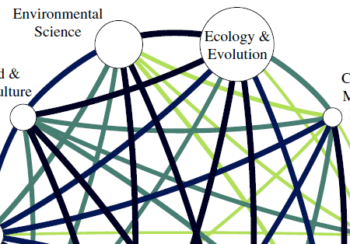Snakes and mice might not look much alike, but much of what we know about skin coloration and patterning in vertebrates, including snakes, is based on research involving lab mice. There are limits, however, to what mice can tell us about other vertebrates because they don’t share all the same types of color-producing cells, known as chromatophores. For example, snakes have a type of chromatophore called iridophores that can generate iridescent colors by reflecting light.
To gain a better understanding of the genetic basis of coloration in vertebrates, an international research team including UGA Professor Doug Menke combined a range of techniques—whole gene sequencing, gene-editing and electron microscopy—to examine color variations and patterning in skin shed by ball pythons bred in captivity.
They were able to identify a particular gene (tfec) that plays a crucial role in reptile pigmentation generally and more specifically in a classic color variant, the piebald, found across vertebrates. This particular coloration is distinguishable by blotches of white.
“Despite many decades of research on the genetics of pigmentation patterning in animals, very little of this work has been performed in reptiles,” Menke said. “Therefore, it’s exciting to finally identify a gene that plays a central role in reptile coloration.”
Crowdsourcing biological data with help of snake breeders
The sale of captive-bred reptiles is a $1.4 billion industry within the U.S. alone. Over 4.5 million American households keep reptiles, and close to one in five of these are snakes bred in captivity. Due to the spectacular color variations produced through captive breeding, an individual ball python—Python regius, originally found in West and Central Africa—can sell for tens of thousands of dollars.
“Ball pythons show incredible variation in skin coloring and patterning, which is part of their appeal for hobbyists, but also makes them really useful for researchers who want to understand the genetic basis of coloration,” said Rowan Barrett, Canada Research Chair in Biodiversity Science at McGill University in Montréal, interim director of its Redpath Museum, and senior author on the recent paper in Current Biology.“The pet trade has created a huge pool of color variation that would not have existed otherwise. This provides a catalogue for us to figure out the many ways that genes produce the amazing diversity of color, spots and stripes we see across different animals.”
Gene-editing confirms role of mutation in reptile coloration
To identify the genes that control a particular trait, scientists look for genetic variants that are present in animals that have the trait and absent in animals that don’t. Using shed skin collected from snake breeders, this research team found that piebald snakes carried the same mutation in the tfec gene.
But a common problem for scientists is that finding a correlation between a gene and a particular trait, such as the piebaldism, does not imply causation. That’s where Menke stepped in.

In order to make that functional link, the McGill researchers collaborated with Menke’s lab in UGA’s Franklin College of Arts and Sciences’ Department of Genetics to modify tfec in a different reptile species, the brown anole lizard, using the gene-editing technology CRISPR. They found that genetically modified lizards do indeed show altered coloration, proving that mutations to tfec cause changes to color-producing cells.
“Our research has revealed that the tfec gene is essential for producing iridescent cells in lizards and highlights the power of gene editing to provide new insights into reptilian biology,” said Menke, whose research team in 2019 was the first to successfully perform gene-editing on a reptile species. “Looking forward, we will use our lizard gene editing methods to explore other reptile traits and advance our knowledge of reptilian genetics.”






